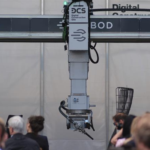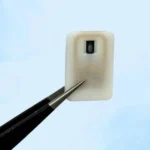Turbofan wheels, symbolic of premier race cars from the 1970s and 1980s, transitioned to a hallmark of street style. Currently, acquiring them can be costly, prompting DIY alternatives.
The Vonka Racing drift team has come up with a solution and have utilized 3D printing to fabricate turbofan wheel covers. Their printer possesses a build space ample for producing full-sized covers in one go. Although the project’s inception is recent, the team has developed various prototypes, assessing diverse materials and configurations.

These covers affix to the hub via 3D printed mounts and a large reverse-threaded nut. While initial designs exhibit potential, challenges arise: issues like excessive flex and absence of rigidity. It’s crucial to balance these components, mitigating vibrations. Concerns also encompass the turbofans’ performance at elevated speeds and in wet conditions.
However, with appropriate design, plastic-printed turbofans could be viable and potentially weigh less than conventional aluminum versions. The fundamental purpose of the turbofan wheel is for the cooling of overheated brakes. High-temperature plastics might be essential for turbofans serving high-performance roles, but for cosmetic applications, most 3D-printable plastics suffice.
Anticipating the industry’s trajectory, if the Vonka Racing team’s experiment flourishes, 3D printed turbofans might emerge as a sought-after accessory in the not-too-distant future.
Source: thedrive.com
Come and let us know your thoughts on our Facebook, Twitter, and LinkedIn pages, and don’t forget to sign up for our weekly additive manufacturing newsletter to get all the latest stories delivered right to your inbox.










